A 'cheap' bike is a loose term but in this case we are referring to adult bikes AU$500 and under. It may seem like a good way of saving a little cash, but there are risks involved in buying a cheap bicycle that you need to take into account before laying down your money. There's nothing wrong with getting a good deal, of course – we'd all like to pay less – but you should make sure that your good deal doesn't turn out too good to be true. And as with anything, there's a tipping point at which the money you are saving initially with a cheap purchase will end up costing you more in repairs and wasted time.
With any purchase it pays to do your research first. If you have a specific model or manufacturer in mind, jump online and look for reviews or 'first-look' articles which summarise the pros and cons of the bike, and be sure to pay particular attention to performance, comfort and safety aspects. YouTube is a great source of easily consumable information, so look for videos from manufacturers for specifications and technology information but also look for impartial people or companies providing their opinions.
If you are not after a specific bike but rather a type of bike, there are plenty of 'best of' lists to help you know what to look for and the options available to you. Buyer's guides, such as our road bike buyer's guide are a handy resource as they provide comprehensive information on what makes a bike better than another and goes into detail on each aspect of a bike such as the frame, wheels, and drivetrain.
Cheap New Bicycles
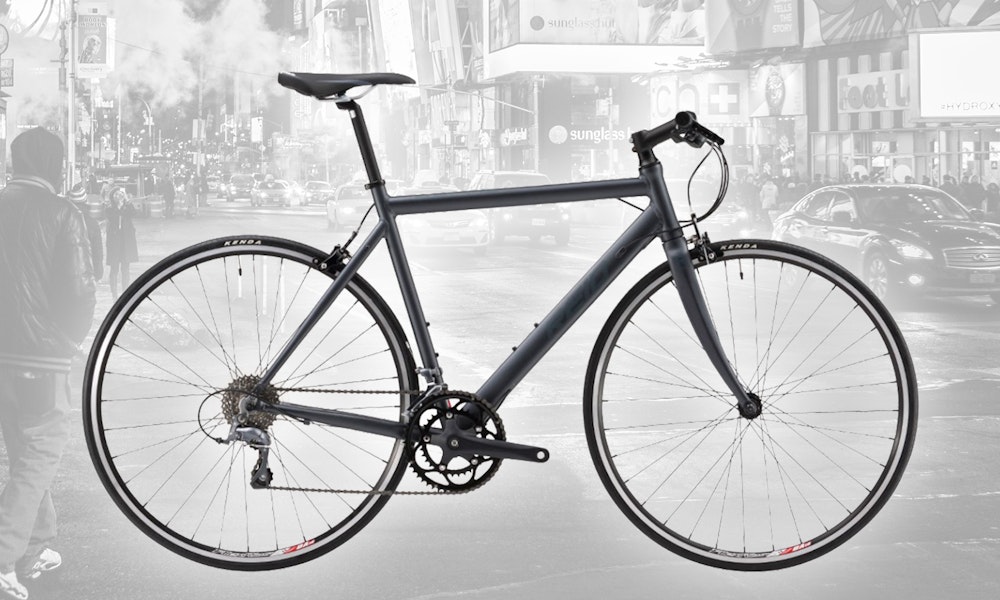
If you're buying a new bicycle, you should always buy one from a specialist retailer rather than from a generic sports store or department store. The depth of knowledge of a specialist retailer is going to be far greater than a general sports store, which, will help you make an informed decision and end up with a better result.
One reason to be careful of general sports stores and department stores is that the cost savings they provide typically come from using sub-standard parts. To make matters worse, the parts affected by this cost-cutting are most likely to be the ones you can't see, such as bearings and cables. If you absolutely must buy such a bicycle, you should take it to a reputable mechanic to get safety checked and adjusted correctly, which, in all probability will push the cost back up to what buying a cheap bicycle from a bicycle shop would have been in the first place. Buying a bike from the same location you plan on getting it serviced will also put some onus on the store to make sure it is working flawlessly and fix any issues promptly at a reasonable cost.
Another thing to consider, no matter where you are buying the bicycle from, is that its cheap price may be the result of it being an end of line item. There's nothing wrong with that, especially with the larger and better-established manufacturers, but if you buy a cheap bicycle from a smaller manufacturer, you may find trouble sourcing parts or support later on. This isn't often a problem – most manufacturers use similar parts and standard sizes – but it is something to be careful of. We’ve seen cases of the low pricing being the result of the brand disappearing, leaving customers without easy warranty support. So before buying a cheap bicycle, ask the seller if the price is a reflection of the bicycle being an end of line run out, and check to make sure that they have plenty of other bicycles from the same manufacturer.
Second Hand Bicycles
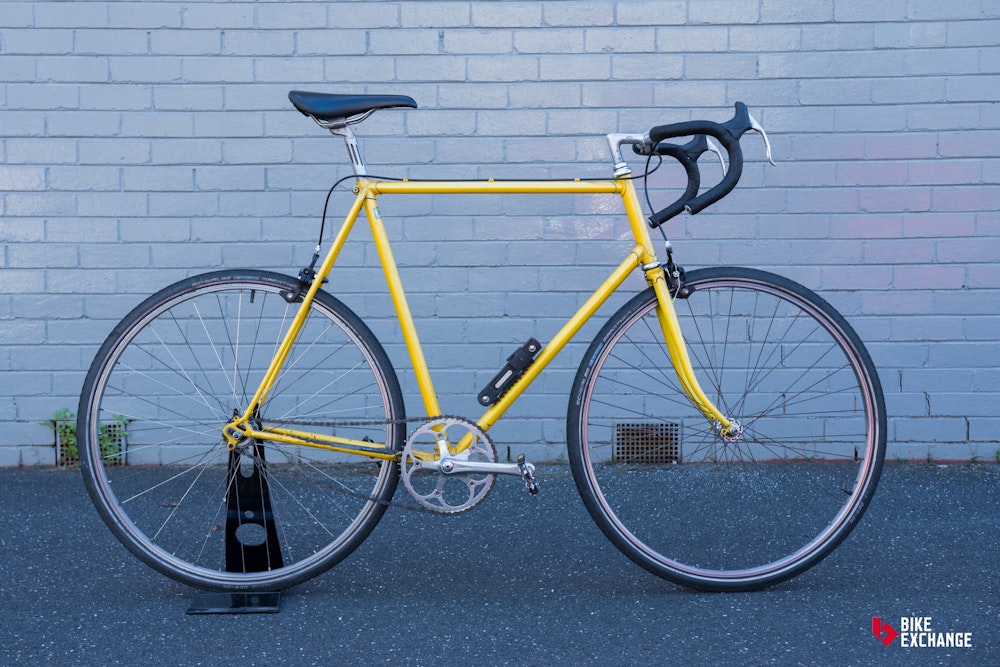
Buying anything second hand has always been a good way to save a few dollars, but such a saving is not without risk.
When buying a second hand bicycle be sure to ask a lot of questions. Why are they selling it? What parts have been changed? What is its usage history? Has it ever been crashed? When was it last serviced? Who did the service? Where did they buy if from? And the list goes on. If the seller gets touchy about any of this, then question the purchase. Knowing how to check over a bike for damage and wear takes experience, and it’s something that good bike shops will typically offer for a small fee. If this isn’t an option, a list of common issues to look out for are outlined below.
The frame: The frame is the foundation of the bike, so ensuring it is sound and without fault is crucial. Also, if the frame is in good working order, getting other parts such as chains, tyres, brakes etc... are far more inexpensive than replacing the frame. When assessing whether or not a frame is in good working order, check for any scratches, dents, chips, or unusual bends. These are likely the result of a crash or dropped bike. This is especially important if you are looking at a carbon frame as a small crack could lead to catastrophic failure of the frame and a lot of damage to you. If you are inspecting an alloy bike, look for any signs of rust or paint bubbling which could indicate corrosion.
Drivetrain: The drivetrain is a closed circuit that propels the bike and consists of the cranks, chain rings (front cogs), chain, cassette (rear cogs), derailleurs and shifters. It directly influences the efficiency of your shifting and generally, the more it costs the more durable it is. All of these components can be replaced but at a cost, so it's worth assessing their condition as it may end up costing a significant amount. While a single deteriorated component isn't 100% indicative the whole drivetrain needs replacing, it's more likely than not that if one component needs replacing, the other components do too. To start with check the cranks for any damage similar to what you are looking for when checking the frame; scratches, dents, chips or bends. The chain rings and cassette are next and here you are checking for sharpened teeth, similar to a 'shark tooth' profile, which indicates excessive wear which will lead to poor engagement with the chain and your gears slipping. The chain comes next and here you are checking for 'stretch' - the chain doesn't actually stretch, the pins that join the links together become worn and the chain grows in length. Here's an in-depth guide on how to check a chain for wear and replace if necessary. Finally, the derailleurs and shifters should move freely without resistance. For more on drivetrains, read through our guide to road bike groupsets.
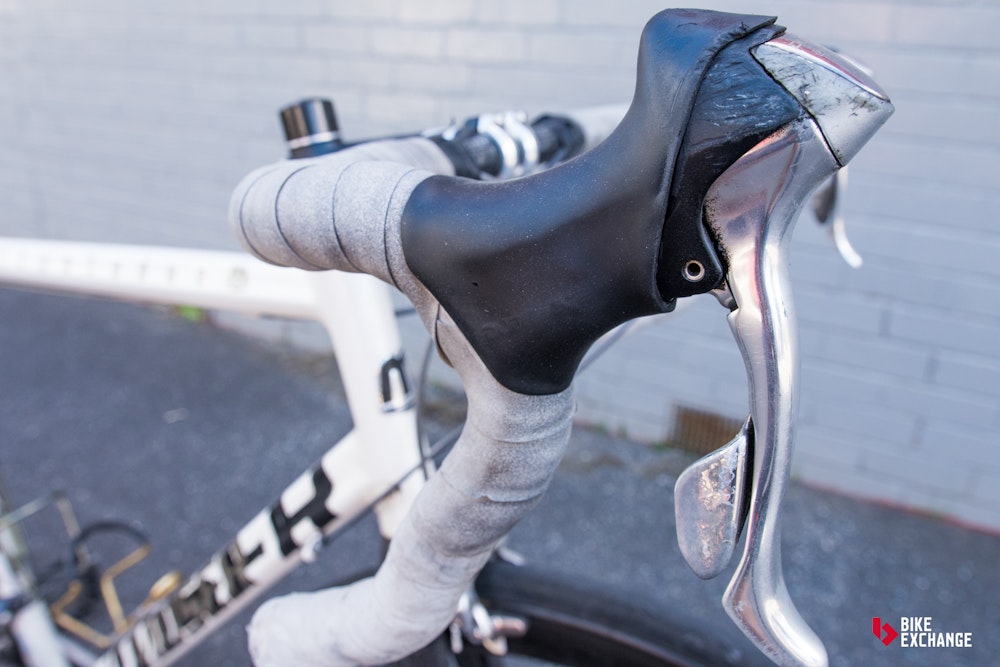
Brakes: The brakes should behave similarly to the derailleurs and shifters, moving freely without resistance. If you squeeze the brake calipers (the part that mounts to the frame and contacts the wheel) and there is resistance or they get stuck once closed, they may need to be replaced.
Wheels: There are few components that influence ride quality greater than wheels, and few that will cost you more to replace, so pay particular attention when assessing the wheels. First of all give them a good spin and make sure they spin straight. Any bowing or movement could be a deal breaker if it's any more than a few millimeters. After that check the rim braking surface for a concave shape which indicates it has been worn down and is at risk of failure.
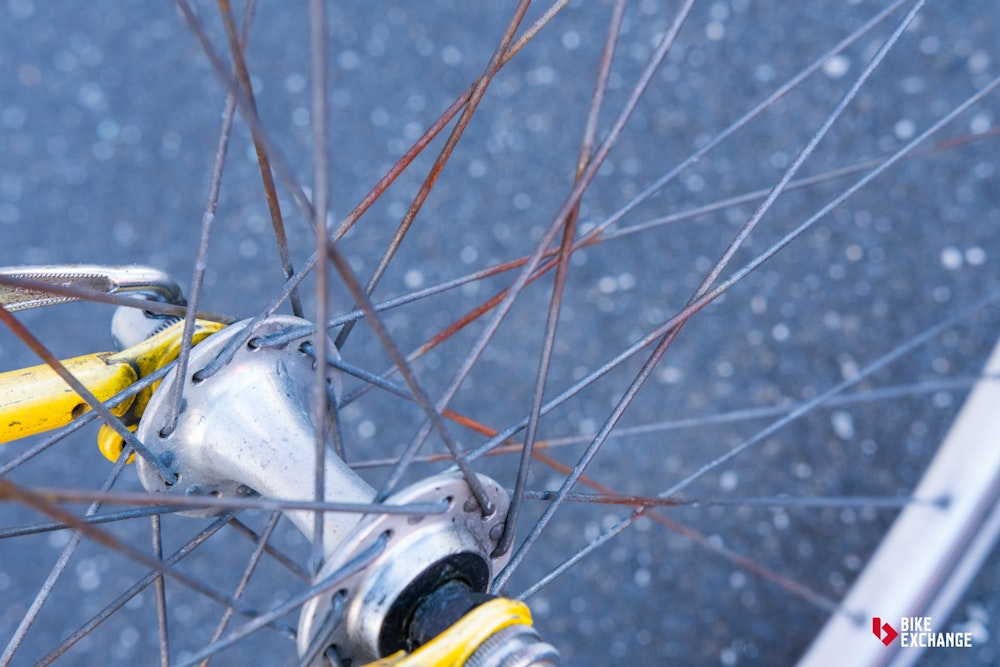
- Tyres: Tyres can easily be replaced but at a cost, so ideally they will be in good condition when you purchase the bike. Look for a square or flat section down the middle of tyre which indicates it's probably due to be changed. Most tyres will have wear indicators in the form of a small hole in the centre of the tyre. When you can no longer see this hole, it indicates there is not sufficient tread left and they need to be replaced.
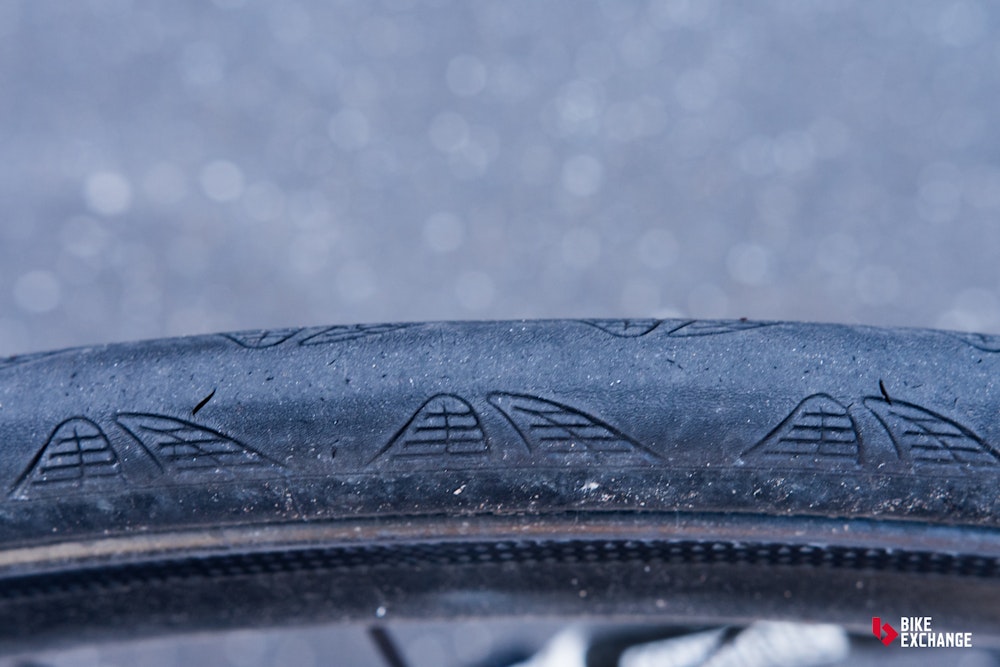
Check for any unusual noises or movement: Any usual noises or movement in a bike is most likely due to poorly maintained bearings. This is especially prevalent at the front of the bike at the headtube, and at the bottom bracket (where the cranks are). A quick way to tell if the bearings at the front of the bike are poor is to apply the front brake and rock the bike back and forth. Any knocking indicates a problem. To check the bottom bracket, a similar test is applicable, hold onto the cranks and try to move them side to side. If there is any lateral movement it indicates a problem.
Bikes with suspension: Suspension is a wear item and needs regular servicing. Push on the suspension, feeling for any sticking or excessive resistance, and also listen for any squeaking. It's also worth asking when did the owner last have the suspension serviced?
Doing these basic checks will help to ensure you’re not buying into someone else’s negligence. The key thing to remember here is that if you're buying a cheap bicycle it's because you want to save some cash. A cheap bicycle requiring a lot of repairs is not a cheap bicycle.
Other expenses to consider
Every new bike sold in Australia should come with reflectors, a 'warning device' of some kind, usually in the form of a bell, and pedals. Aside from those items you need to set some money aside for other essential things like a helmet, front and rear lights (for riding at night or low light), pump, puncture repair kit, spare tube and bottle cage to carry water. If you are keen to improve comfort and performance, investing in some quality cycling specific clothing and clipless (aka: clip in) shoes and pedals will make a world of difference. Be sure to factor in these additional costs when purchasing a bike so you don't get a nasty surprise.
Follow BikeExchange: Email | Facebook | Twitter | Instagram | YouTube | STRAVA





